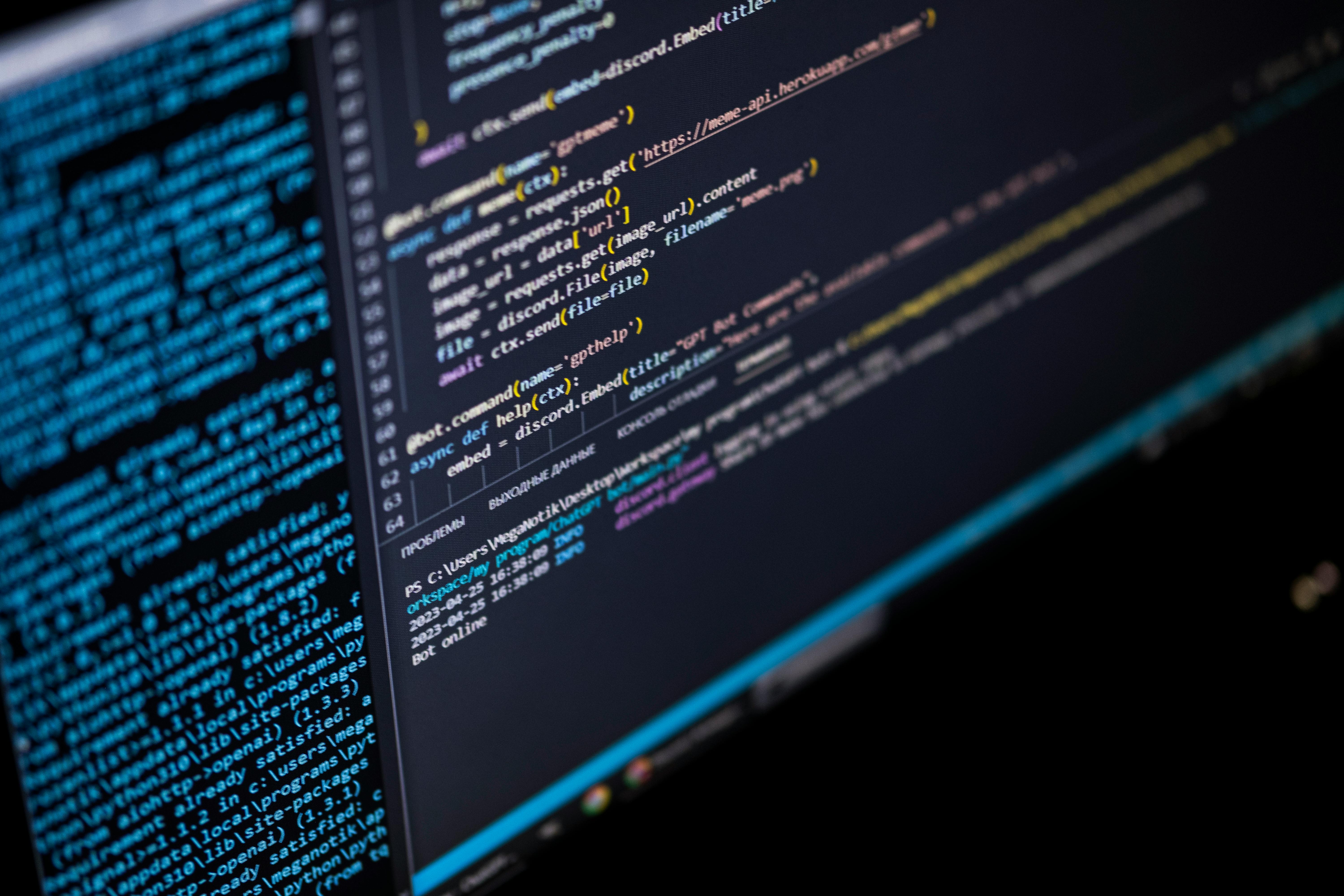Securing Tomorrow: Why America Needs an AI Education Corps
An AI Education Corps can gird the U.S. public against AI threats while empowering them to contribute to AI innovation.

Published by The Lawfare Institute
in Cooperation With

Artificial Intelligence (AI) is no longer a future prospect; it is a present reality fundamentally altering U.S. national security and economic competitiveness. Maintaining American leadership in this domain requires more than technological innovation—it demands a strategically literate populace and a robust pipeline of domestic talent capable of developing, deploying, and defending against AI capabilities. While President Donald Trump’s recent executive order, “Advancing Artificial Intelligence Education for American Youth,” acknowledges this need, its framework—relying primarily on task forces, grant prioritization, and partnership formation—lacks the scale and implementation power required to meet the immediate strategic challenge. Existing educational infrastructure is demonstrably unprepared to deliver the widespread AI proficiency necessary to counter sophisticated disinformation threats, fill critical national security workforce gaps, and outpace determined global competitors.
I argue for a concrete, actionable solution: the creation of a national AI Education Corps. This initiative is proposed not merely as an educational program, but as a vital component of U.S. national strategy. It offers the necessary mechanism to translate the executive order’s objectives into tangible results by deploying specialized expertise directly into K-12 schools nationwide. The Corps is designed to provide the sustained, adaptable support required to build foundational AI literacy at scale—a prerequisite for national resilience against AI-driven threats and for cultivating the human capital essential for long-term technological and military advantage. Status quo approaches are insufficient; a dedicated, national effort is now a strategic necessity.
The National Security Imperative
The national security implications of AI extend far beyond autonomous weapons systems or intelligence analysis, touching the very fabric of our society and democratic institutions. A populace lacking foundational AI literacy becomes acutely vulnerable to manipulation by adversaries who increasingly weaponize AI for sophisticated disinformation and influence operations. The ability to generate hyper-realistic deepfakes, craft micro-targeted propaganda, and automate the spread of divisive narratives at scale poses an unprecedented threat to social cohesion and trust in institutions—essential elements of national resilience. Widespread AI education is, therefore, a crucial component of national defense, equipping citizens with the critical thinking skills needed to discern AI-generated falsehoods and understand the mechanisms behind the algorithmic curtain.
Furthermore, securing America’s future requires robust internal capacity not only to develop cutting-edge AI but also to integrate it effectively and ethically across government and critical infrastructure, particularly within the Department of Defense and the intelligence community. Successfully deploying AI depends on more than just algorithms; it requires a complex supporting ecosystem encompassing reliable technology, foundational digital infrastructure, ethical guidelines, and, critically, a skilled workforce. The current, well-documented shortages in the cyber and tech workforce within the federal government, especially the Defense Department (which faced a 16 percent civilian cyber vacancy rate, translating to roughly 28,000 personnel short, even after improvement efforts in late 2024), highlight a significant vulnerability. While initiatives like skills-based hiring are steps in the right direction, they do not address the fundamental pipeline problem. The U.S. needs a long-term strategy to cultivate AI talent from an early age, building a deep bench of citizens capable of serving in these critical roles. An AI Education Corps serves as a foundational investment in this human capital, nurturing the future technologists, analysts, policymakers, and ethicists who will shape America’s AI-powered future.
The Current Landscape: Acknowledging Progress, Recognizing Gaps
The education executive order rightfully prioritizes AI literacy and calls for a set of novel interventions. For example, it directs the creation of a White House Task Force on AI Education, encourages public-private partnerships for developing K-12 resources, and tasks the secretary of education with overseeing a discretionary grant program that supports teacher training. On the whole, it aims to empower youth, foster expertise, and maintain U.S. global dominance in AI. These directives create important momentum.
However, the executive order’s general reliance on existing structures and funding streams risks slow, uneven implementation. Mandates for task forces and prioritized grant considerations often diffuse responsibility and lack the direct intervention needed to transform classroom practices nationwide. Teacher training, while essential, faces immense hurdles. One-off professional development (PD) sessions are inadequate for a field evolving as rapidly as AI. Educators need sustained, expert support to move beyond superficial treatments (like basic prompt engineering) and truly integrate AI concepts and critical thinking about AI across subjects. Furthermore, the initiative arrives amid a severe, preexisting AI talent shortage across the economy. Projections indicate the U.S. could face a shortfall of nearly 700,000 AI-related jobs by 2027, requiring massive reskilling efforts. Nearly half of executives cite a lack of in-house AI expertise as a key barrier to AI adoption. Building the domestic pipeline through K-12 education is therefore not just beneficial, but essential to alleviate this broader constraint on innovation and national capacity.
The Global Context: The Race for AI Supremacy and Talent
The need for ambitious AI education reform is amplified by the global context. Nations worldwide recognize the strategic importance of AI and are investing heavily in cultivating talent. America’s chief strategic competitor, China, exemplifies this focus. Researchers from China now constitute over a quarter (26 percent in 2022) of the world’s top AI experts presenting at premier conferences like NeurIPS, a dramatic increase from 10 percent in 2019. This surge is fueled by a massive expansion of university AI programs and dedicated national talent recruitment initiatives. Critically, this talent is increasingly staying domestic; 90 percent of AI researchers graduating from Chinese institutions remain in China, and the overall share of top global AI researchers working in China nearly tripled between 2019 and 2022 (from 11 percent to 28 percent).
China’s commitment extends deep into its education system. Beijing now mandates AI training for all students, starting in elementary school, as part of a national goal to become a “strong education nation” by 2035, leveraging AI to modernize learning. Pilot programs and national platforms are being deployed to support this integration. While the U.S. still attracts significant global talent—indeed, immigrants founded around two-thirds of top U.S. AI startups—we cannot be complacent. Increased global competition for talent, coupled with trends showing more researchers opting to work in their home countries, means the U.S. must redouble efforts to cultivate its domestic pipeline. China’s progress, including advancements like the DeepSeek models, underscores that talent can compensate for other potential disadvantages. Ceding the talent battle, particularly at the foundational K-12 level, is a strategic blunder America cannot afford. Other nations, including Singapore, South Korea, Finland, and Canada, are also implementing national AI education initiatives, underscoring a global shift that the U.S. must lead, not follow.
Proposal: The AI Education Corps—Structure and Vision
To bridge the gap between the executive order’s aspirations and the on-the-ground reality, I propose the establishment of an AI Education Corps. This initiative would function as a dedicated implementation arm, bringing scaled expertise and sustained support directly into school districts.
- Recruitment and Composition: The Corps would recruit volunteers—recent graduates, doctoral students, postdoctoral fellows, and potentially industry professionals on sabbaticals—from leading R1 universities and AI labs. Participants would possess strong technical AI backgrounds combined with training in pedagogy and educational outreach.
- Deployment Model: Volunteers would be assigned to specific school districts for an intensive, in-person summer training program alongside local educators. This initial immersion would focus on foundational AI concepts, ethical considerations, and pedagogical strategies for teaching AI across different subjects and grade levels, while taking into consideration the specific context (economic, cultural, political) of the assigned district.
- Sustained Support: Following the summer immersion, Corps members would provide continuous, year-round support virtually. This would include regular online training workshops for educators (keeping them abreast of AI developments), dedicated virtual office hours for both teachers and students seeking help or mentorship, and assistance in developing and adapting AI-related curriculum modules.
- Focus on Foundational Understanding: The Corps’s approach would explicitly avoid imparting only temporally useful skills (like specific prompting techniques for current models). Instead, it would focus on building a deep, conceptual understanding of AI principles, data literacy, algorithmic thinking, ethical implications, and the societal impact of AI. The goal is to empower educators and students to become adaptable, critical lifelong learners in the face of inevitable technological change.
- Tailored Implementation: Recognizing the diversity of American schools, the Corps would work with districts to tailor support, ensuring relevance to local needs and resources, rather than imposing a one-size-fits-all model.
Operations, Incentives, and Sustainability
Making the AI Education Corps a reality requires addressing recruitment incentives and operational sustainability.
- Incentives for Participation: Attracting top talent requires compelling incentives. Financial hooks could include significant stipends (potentially funded through a mix of public appropriations linked to the executive order and private-sector contributions via partnerships), student loan forgiveness programs, or tax breaks for participants. Social and professional incentives are equally important: official recognition for national service, robust media coverage highlighting the Corps’s mission and impact, networking opportunities, and pathways into careers in public service, education policy, or AI labs. Imagine if OpenAI, Google, and Meta pledged to give preference to applicants with AI Education Corps experience. My hunch is that some of the brightest students would take advantage of that boost. Similarly, I’d wager that existing AI lab experts would benefit tremendously from a tour with the Corps. They would return with a novel set of insights regarding barriers to adoption that their colleagues likely would have otherwise missed.
- Funding and Partnerships: While federal funding is crucial for establishing and scaling the Corps, leveraging the public-private partnerships envisioned in the executive order will be vital for long-term sustainability. Tech companies, foundations, and academic institutions can contribute funding, technical expertise, training resources, and recruitment pipelines. Google.org’s AI Opportunity Fund, which totaled $75 million and helped fund projects like AI adoption by nonprofits, illustrates the potential for collaborative and creative funding structures.
- Governance and Oversight: The Corps could potentially be housed within an existing agency like the Department of Education or the National Science Foundation, or established as a quasi-independent entity, perhaps overseen by the White House Task Force mentioned in the executive order. Clear governance structures, rigorous evaluation metrics, and mechanisms for continuous improvement based on feedback from educators and districts would be essential.
- Curriculum Collaboration: Acknowledging the primacy of state and local control over curriculum, the AI Education Corps would function as a collaborative partner, not a top-down director. Its role would involve working closely with state education agencies, school districts, curriculum specialists, and educational organizations to co-develop, curate, and disseminate high-quality AI literacy resources. This collaboration would focus on creating practical, adaptable materials—such as modular lesson plans suitable for different subjects (e.g., exploring algorithms in math, AI ethics in social studies, generative AI tools in language arts), project-based learning guides, curated datasets for classroom use, ethical case studies reflecting diverse perspectives, and validated assessment tools. Emphasis would be placed on ensuring these resources are adaptable to various grade levels (K-12), student needs, and technological capacities within schools. And, as mentioned, Corps members would provide more fundamental support to educators—such as regular and robust trainings—so that they eventually feel empowered to adjust their own lesson plans.
Assessing the Feasibility of the Corps
Any proposal for a significant national initiative like the AI Education Corps will inevitably face skepticism and counterarguments. Anticipating and addressing these concerns is crucial for building support and refining the concept.
- Cost and Funding: Critics will undoubtedly point to the potential cost of establishing and maintaining the Corps. While significant investment is required, the cost must be weighed against the immense cost of inaction. Falling behind in AI development carries catastrophic economic and national security consequences far exceeding the program’s budget. Furthermore, leveraging public-private partnerships, as envisioned in the executive order, can distribute the financial burden. The investment in human capital via the Corps should be viewed as a critical down payment on future innovation, economic growth, and national security—a strategic necessity, not a discretionary expense.
- Federal Overreach: Concerns about federal intrusion into education, traditionally a state and local domain, are legitimate. However, the AI Education Corps is designed as a support structure, not a mandate imposing a federal curriculum. It collaborates with districts, tailoring assistance to local contexts. Moreover, the national security dimensions of AI literacy transcend state boundaries. Just as the federal government played a role in bolstering STEM education during the space race via initiatives like the National Defense Education Act, the current strategic competition in AI justifies a coordinated national effort to build foundational capacity. The threat landscape demands a national response.
- Bureaucracy and Inefficiency: Fears of creating another slow, inefficient federal bureaucracy are understandable. To mitigate this, the Corps should be designed with agility and accountability from the outset. Lean governance structures, clear performance metrics focused on educator and student outcomes, and direct feedback loops from participating districts are essential. Leveraging technology for virtual support minimizes physical overhead. The focus should be on deploying expertise efficiently, not building administrative empires.
- Feasibility and Scalability: Recruiting sufficient numbers of qualified AI experts willing to dedicate time to K-12 outreach presents a challenge. However, tapping into the idealism and desire for impact among recent graduates, doctoral students, and even industry professionals, combined with attractive incentives (financial and social), can create a robust pipeline. Models like Teach For America, although imperfect, demonstrate the potential for mobilizing talent for educational service. Scalability can be achieved through phased rollouts, starting with pilot districts and expanding based on demonstrated success and refined operational models. That said, this rollout should proceed at a speedy pace.
- Effectiveness: Some may argue that strengthening existing teacher PD programs is a more efficient approach. While improving current PD is necessary, by itself it is insufficient. The pace of AI development requires specialized expertise and continuous support that typical PD structures struggle to provide. The Corps offers dedicated, sustained mentorship from individuals deeply immersed in the field, ensuring educators receive timely, relevant guidance beyond generic training modules. It complements, rather than replaces, existing efforts.
- The State-Based Alternative: What if federal action stalls due to political gridlock or lack of will? In such a scenario, state-level AI Education Corps initiatives could emerge. States like Oklahoma have already partnered with AI labs to accelerate workforce development, suggesting potential appetite for state-led action. Such programs could offer advantages in tailoring approaches to specific state educational systems and priorities, potentially launching more quickly without federal hurdles. However, a purely state-based approach carries significant risks. It could exacerbate existing inequities, creating a patchwork system in which students in well-resourced or proactive states receive strong AI education while others fall further behind. It would lack the national coordination needed to address shared security vulnerabilities and ensure a baseline level of AI literacy nationwide. Most critically, it may fail to achieve the scale and strategic coherence required to compete effectively with nations pursuing centralized, national AI talent strategies. While state initiatives are better than nothing, they represent a suboptimal fallback compared to a coordinated, federally supported national AI Education Corps.
From Aspiration to Action for a Secure AI Future
The imperative to integrate AI education into the fabric of American learning is undeniable. The education executive order provides a valuable statement of intent and crucial top-level backing. Yet aspirations alone will not secure America’s future in an era increasingly defined by AI. The scale of the challenge—bridging a significant talent gap, countering sophisticated national security threats, and competing effectively on the global stage—demands more than incremental adjustments. It demands a dedicated, nationwide effort capable of delivering sustained, expert support directly to American schools and educators.
The AI Education Corps offers a concrete, ambitious, yet achievable pathway to translate the executive order’s goals into reality. By mobilizing talent from our leading institutions, providing tailored, ongoing support, and focusing on deep, adaptable understanding, the Corps can build the foundational AI literacy essential for economic prosperity and national security. It represents an investment in our most critical asset: our people. It fosters the informed citizenry needed to navigate an AI-permeated world, resist manipulation, and contribute to the responsible development and deployment of this powerful technology. Addressing counterarguments clarifies its feasibility and necessity, while acknowledging alternatives underscores the superiority of a unified national approach. Failing to act decisively now to match the ambition of our competitors risks ceding leadership and compromising our security. It is time to move beyond declarations and build the AI Education Corps—for students, educators, and the future of the nation.

.png?sfvrsn=94f97f2c_3)

.png?sfvrsn=66bc5b35_5)

